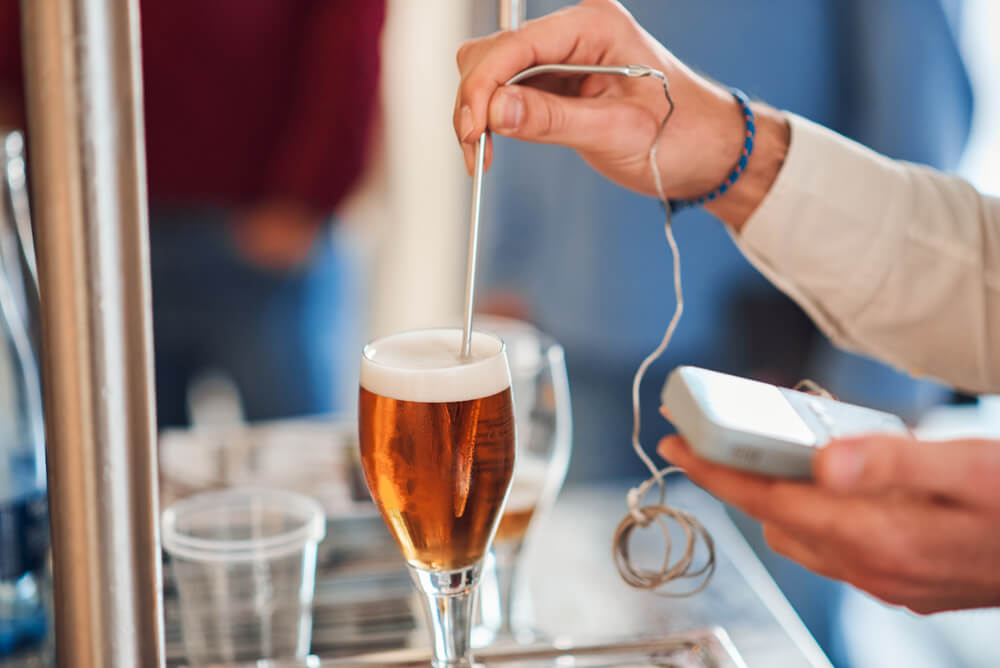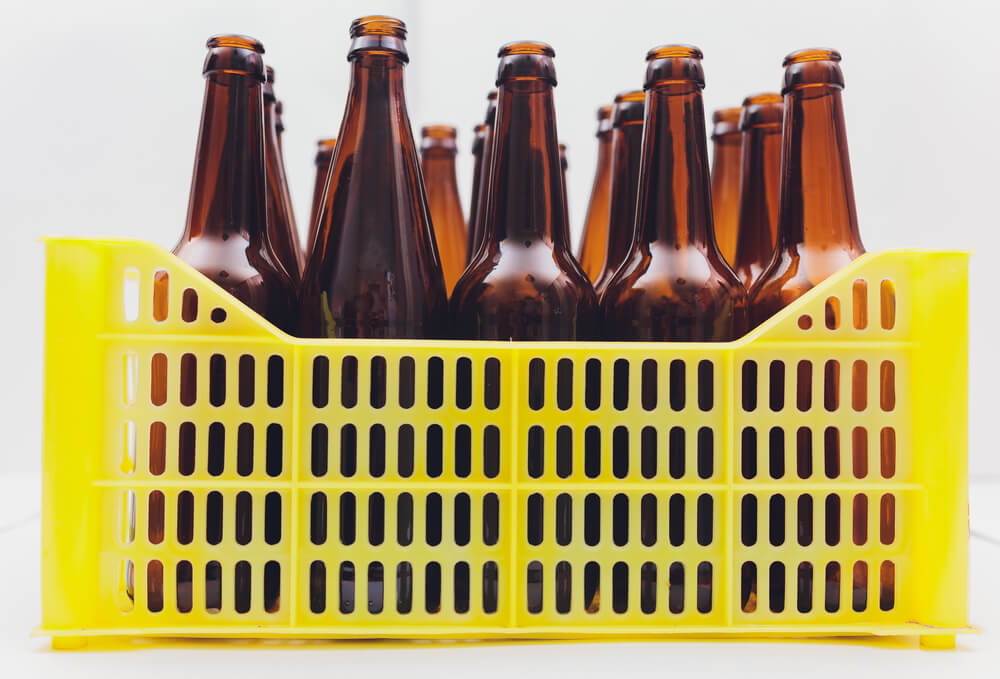In this article, we’ll share with you our picks for the best digital thermometer for home brewing.
Temperature plays a vital role in homebrewing. Each phase of the process has a specific temperature that is best. Being able to correctly and accurately measure the temperature of your boil, sparge water, wort and fermentation means that you’re more likely to have a successful result with your homebrew.
As we have grown as homebrewers, there are a lot of things that we’ve learned along the way. One of the most important is that fast yet accurate temperature readings are critical for ensuring an excellent end product.
We started out using the traditional dial and glass thermometers. Actually, for a long time, our favorite thermometer was a handy floating thermometer. And while these manual thermometers were fine, we realized that they weren’t very good at making a quick reading, and we questioned their reliability.
Our desire to experiment has led us to try several different styles of thermometers for our homebrewing. We’ve found that it’s helpful to have separate thermometers for different stages of the brew. And we’ve found that digital thermometers are the fastest and tend to be the most accurate.
Table of Contents
Methodology
To develop our list of the best digital thermometers for home brewing, we started by making a list of the most frequently referenced options by some of our favorite brewing websites.
Then we went shopping. We selected a few digital thermometer options for each phase of our brew and went to work.
Not only did we use hands-on testing, but we also took some time to read the reviews from other brewers about the thermometers that we had selected. Of course, we also considered the ratings that each thermometer had on our favorite homebrew supply websites.
All of this helped us to create this list of the best digital thermometers for each stage of home brewing.
Best Digital Thermometer for Mashing In
Blichmann Engineering Brewvision Thermometer
Temperature Range: 38 to 220 degrees Fahrenheit
Read Time: Not listed
Let’s start with a more high-tech option. The Blichmann Brewvision Thermometer replaces the dial thermometer on your kettle. This excellent thermometer is completely hands-off and allows you to monitor your mash temperature from an app on your smartphone, thanks to Bluetooth technology.
This means you can walk away from your mash and not have to worry about the temperature getting too hot or cooling down too much.
Pros:
- Easy to install
- It can be read remotely
- Relatively sturdy
- Easy to clean
Cons:
- Requires a smartphone app to work
- The app can be challenging to learn
- Narrow temperature range
Best Digital Thermometer for Sparge Water
Taylor Precision Products Digital Panel Mount Thermometer

Temperature Range: -40 to 300 degrees Fahrenheit
Read Time: 10-seconds
We like this thermometer because it is easy to use and has a nice big screen. The 10-foot cord is attached to a waterproof, immersible temperature probe.
It was one of the fastest thermometers that we tested and is pretty accurate. The display has mounting holes, so you can attach it to your brew station or just set it on your counter.
Pros:
- 10-foot cord
- Simple to use
- Wide temperature range
Cons:
- The display is kind of hard to see in low light
- The probe doesn’t disconnect from the display
Best Digital Thermometer for the Boil
Northern Brewer Folding Digital Thermometer
Temperature Range: -58 to 572 degrees Fahrenheit
Read Time: 2 to 3 seconds
When you’re watching the temperature of your boil, you don’t have to be as accurate as some other times during your brew day. For spot-checking the temperature of the boil, we found that the Northern Brewer Folding Digital thermometer was a great option. It wasn’t too expensive, and it read the temperature really fast.
Pros:
- Easy to use
- Inexpensive
- Compact design fits easily into drawers
- The backlit display is easy to see
- Wide temperature range
Cons:
- The plastic body seems flimsy
- Must get close to hot liquids to take measurement
- Buttons are small
Best Digital Thermometer for Cooling Wort
CDN DTW450L Waterproof Thermometer
Temperature Range: -40 to 450 degrees Fahrenheit
Read Time: 6 seconds
When you’re cooling your wort, the last thing you want to do is introduce bacteria and junk to your beer with your thermometer. We like this thermometer because not only is it easy to use, but it comes with a stainless-steel clip that you can attach to your kettle.
The long stem on this thermometer is great for deep kettles, and it’s fully immersible. So you can easily read the temperature of your cooling wort without messing with your thermometer, which keeps your beer free of contaminants.
Pros:
- Easy to use
- Clips to the edge of the kettle
- 8” stem reached into deeper kettles
Cons:
- The display is small and not backlit
- Buttons are tiny
- The clip can be tricky
Best Digital Thermometer for Fermentation
Tilt Digital Hydrometer and Thermometer
Temperature Range: up to 185 degrees Fahrenheit
Read Time: Not listed
To properly track fermentation, you need to watch both temperature and specific gravity. The old-fashioned way to do this was to stick a crystal strip thermometer on the outside of your fermenter and periodically measure the specific gravity by hand.
The problem with this process is you risk introducing unwanted contaminants to your beer. Tilt has developed an outstanding solution, a floating, Bluetooth, thermometer, and hydrometer in one handy tool.
Simply sterilize the Tilt, place it in your fermenter, download the app, and you’re reading fermentation temperature and specific gravity in real-time.
Pros:
- Reads temperature in real-time
- Can be calibrated
- Very accurate temperature reading
- It also reads specific gravity
Cons:
- Expensive
- Requires a smartphone or tablet
- Dry hopping can interfere with Bluetooth connection



